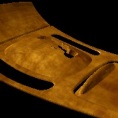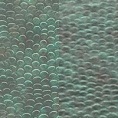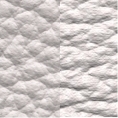Bidirectional Texture Function Modelling
Non-linear Reflectance Model for Bidirectional Texture Function Synthesis
Abstract:
A rough texture modelling involve huge image dataset - the Bidirectional Texture Function (BTF). This texture function is 6-dimensional depending on planar texture coordinates as well as on view and illumination position. The main contribution of this work is a new non-linear reflectance model which enable to synthetise BTF of a rough materials with complicated anisotropic properties. The model is based on modified and extended Lafortune reflectance model computed per each texel. The extension consist in adding a few spectral parameters for each BTF image which are linearly estimated according to original data in second estimation step. A model parameters are computed for every surface reflectance field contained in original BFT data. The final memory BTF data storage demands are with using of this technique reduced in ratio 1:15 when the synthetised images are almost indiscernible from originals. The method is universal, robust and easily implementable in a graphical hardware. Fast Bidirectional Texture Function Modeling based on 2D Causal Auto-Regressive model
Abstract:
The bidirectional texture function (BTF) describes rough texture appearance variations due to varying illumination and viewing conditions. Such a function consists of thousands of measurements (images) per sample. Resulted BTF size excludes its direct rendering in graphical applications and some compression of these huge BTF data spaces is obviously inevitable. In this paper we present a novel fast probabilistic model-based algorithm for realistic BTF modelling allowing such an efficient compression with possibility of direct implementation inside the graphics card. The analytical step of the algorithm starts with the BTF space segmentation and range map estimation of the BTF surface followed by the spectral and spatial factorisation of selected sub-space multispectral texture images. Single monospectral band-limited factors are independently modelled by their dedicated causal autoregressive models (CAR). During rendering the corresponding sub-space images of arbitrary size are synthesised and both multispectral and range information is combined in a bump mapping filter of the rendering hardware according to view and illumination positions. The presented model offers huge BTF compression ratio unattainable by any alternative sampling-based BTF synthesis method. Simultaneously this model can be used to reconstruct missing parts of the BTF measurement space.BTF Modelling Using 3D CAR Model
Abstract:
The bidirectional texture function (BTF) describes texture appearance variations due to varying illumination and viewing conditions. This function is acquired by large number of measurements for all possible combinations of illumination and viewing positions hence some compressed representation of these huge BTF texture data spaces is obviously inevitable. In this paper we present a novel efficient probabilistic model-based method for multispectral BTF texture compression which simultaneously allows its efficient modelling. This representation model is capable of seamless BTF space enlargement and direct implementation inside the graphical card processing unit. The analytical step of the algorithm starts with BTF texture surface estimation followed by the spatial factorization of an input multispectral texture image. Single band-limited factors are independently modelled by their dedicated 3D causal autoregressive models (CAR). We estimate an optimal contextual neighbourhood and parameters for each CAR. Finally the synthesized multiresolution multispectral texture pyramid is collapsed into the required size fine resolution synthetic smooth texture. Resulting BTF is combined in a displacement map filter of the rendering hardware using both multispectral and range information, respectively. The presented model offers immense BTF texture compression ratio which cannot be achieved by any other sampling-based BTF texture synthesis method.Fast BTF Texture Modelling
Abstract:
This work presents a fast model-based algorithm for realistic multispectral BTF texture model capable of direct implementation inside the graphical card processing unit. The algorithm starts with surface range-map estimation from one texture image based on shape from shading technique [Frankot,Chellappa 88]. The estimated range-map is finally combined with probabilistic smooth synthetic texture. Synthetic BTF image is rendered according surface range-map for required view and illumination angle.




